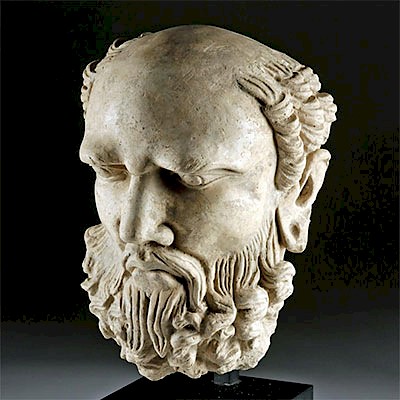12th C. Islamic Ghasnavid Brass Incense Burner - Feline
Lot 165
About Seller
Artemis Fine Arts
686 S Taylor Ave, Ste 106
Louisville, CO 80027
United States
Selling antiquities, ancient and ethnographic art online since 1993, Artemis Gallery specializes in Classical Antiquities (Egyptian, Greek, Roman, Near Eastern), Asian, Pre-Columbian, African / Tribal / Oceanographic art. Our extensive inventory includes pottery, stone, metal, wood, glass and textil...Read more
Categories
Estimate:
$2,400 - $3,600
Absentee vs Live bid
Two ways to bid:
- Leave a max absentee bid and the platform will bid on your behalf up to your maximum bid during the live auction.
- Bid live during the auction and your bids will be submitted real-time to the auctioneer.
Bid Increments
| Price | Bid Increment |
|---|---|
| $0 | $25 |
| $300 | $50 |
| $1,000 | $100 |
| $2,000 | $250 |
| $5,000 | $500 |
| $10,000 | $1,000 |
| $20,000 | $2,500 |
| $50,000 | $5,000 |
| $100,000 | $10,000 |
| $200,000 | $20,000 |
About Auction
By Artemis Fine Arts
Jan 16, 2020
Set Reminder
2020-01-16 10:00:00
2020-01-16 10:00:00
America/New_York
Bidsquare
Bidsquare : Ancient | Asian | Ethnographic
https://www.bidsquare.com/auctions/artemis-gallery/ancient-asian-ethnographic-4799
Featuring classical antiquities, ancient and ethnographic art from cultures encompassing the globe. Artemis Fine Arts info@artemisfinearts.com
Featuring classical antiquities, ancient and ethnographic art from cultures encompassing the globe. Artemis Fine Arts info@artemisfinearts.com
- Lot Description
Central Asia, Ghaznavid Empire which covered present day Northwest India, Pakistan, Iran, and Afghanistan, ca. 12th CE. A fabulous openwork brass incense burner in the form of a wild feline creature (perhaps a lioness or a lynx), with the neck/head cast separately from the lower body and hinged to the front of the chest so that it opens and closes, and the head may be lifted to place incense within the body. The creature presents a rounded head with perky ears, openwork eyes and mouth, and magnificent bas relief whiskers; a generally cylindrical body with a curled up tail, straight legs, and hooves instead of paws. The reason for this imaginative combination of elements is that under Islamic religious law, actual anthropomorphic and zoomorphic representations were forbidden. Given this, the "principle of improbability" was enacted in order to create renderings of fictitious animals that did not actually exist in reality, so that no one could argue that they represented animals found in nature. Size: 8" L x 10.3" H (20.3 cm x 26.2 cm)
The entire body of the animal is hollow with extensive openwork to provide beautiful abstract patterns of floral and stellar scrollwork. The large scale of this piece meant that it could hold quite a bit of incense, which was an especially valuable trade item. Given this, as well as its outstanding artistry, this incense burner was most likely created for someone of elite social status.
The Ghaznavid Empire was the first significant Muslim power of Central Asia, and it was responsible for spreading Islam into India. As a result, Islam became India's second-largest religion. Such impressive stylized felines were also produced in the workshops of Khurassan during the Seljuk dynasty in the eastern regions of ancient Persia - the Seljuks took over the Ghaznavid Persian domains by 1040 CE. Although wild felines were popular motifs in Islamic art, lions were rare in these territories, and because of this, were regarded as legendary creatures. Lions also symbolized kingship or nobility, connoting courage, strength, and royal might. Finally, the lion was long associated with the zodiac and astrology.
A very similar cast bronze incense burner in the form of a lion created in 14th/15th century India but obviously inspired by Khorassan incense burners of the same form sold for GBP 29,300 at Christie's London (23 October 2007, Lot 93).
Similar examples may also be found in the Metropolitan Museum of Art, the Hermitage Museum, the Musee du Louvre, and the Khalili Collection. This is a truly outstanding piece of ancient Islamic art.
Provenance: ex private Yunesi collection, acquired in Iran in 1966
All items legal to buy/sell under U.S. Statute covering cultural patrimony Code 2600, CHAPTER 14, and are guaranteed to be as described or your money back.
A Certificate of Authenticity will accompany all winning bids.
We ship worldwide and handle all shipping in-house for your convenience.
#149141Expected surface wear commensurate with age. The bronze has developed a gorgeous patina of vibrant green (verdigris) and dark brown. The golden areas indicate areas of scuffed patina that actually imbue the piece with more beauty.Condition
- Shipping Info
-
All shipping is handled in-house for your convenience. Your invoice from Artemis Gallery will include shipping calculation instructions. If in doubt, please inquire BEFORE bidding for estimated shipping costs for individual items.
-
- Buyer's Premium



 EUR
EUR CAD
CAD AUD
AUD GBP
GBP MXN
MXN HKD
HKD CNY
CNY MYR
MYR SEK
SEK SGD
SGD CHF
CHF THB
THB















